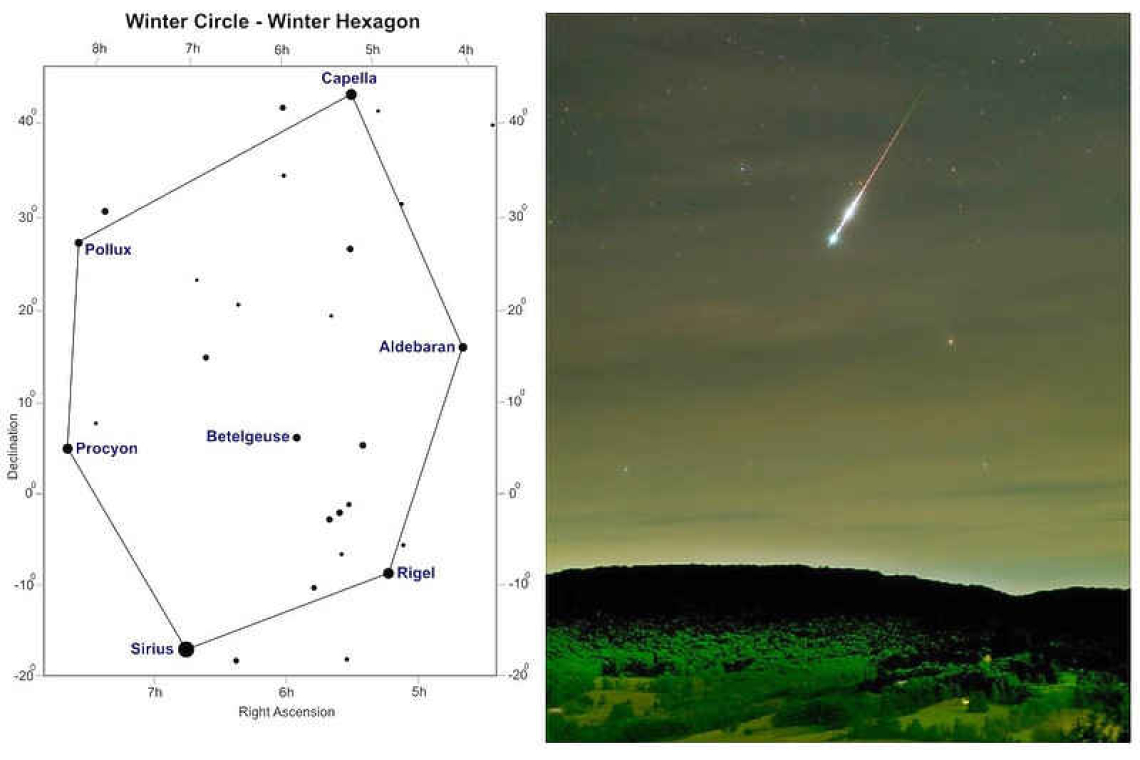~ St. Maarten’s Backyard Astronomy for October 21-23 ~
Sun rises at 6:07am
Sun sets at 5:45pm
Lunar phase: 4th quarter, waning crescent
Moon rises at 3:31am, Saturday
Moon sets at 4:08pm, Saturday
This weekend, we can watch the stars and planets with no interference from a bright moon’s glaring light. Moonlight may be oh so romantic, but it’s not the best for those of us who love star gazing. This weekend, you might be lucky enough to see something else among the celestial delights – meteors!
The annual Orionid Meteor Shower is set to peak Friday night and continue through the weekend. The Orionids generally give us a good show, and occasionally they can steal the show with more of than 20 streaks crossing the sky per hour. Orionids are associated with the famous Halley’s Comet. We also saw dust from this comet in May, known as the Eta Aquarids. In both these cases, the earth is passing through the debris field left in Halley’s wake. The debris field is more or less stationary as we know that Halley’s Comet takes around 76 years to make a complete revolution around the Sun. We won’t actually see it again until 2061.
Orionids are named after one of our favourite constellations – Orion the Hunter. This is because the meteors seem to emerge or radiate out from the Orion constellation. But you don’t have to find Orion to see the meteors, just look up and be patient – you have a good chance this weekend. Be aware, though, the best show is in the wee hours of the morning and on until dawn!
Elsewhere, the night sky is offering the yearly shift from the summer constellations to the winter array of stars, and this includes the Winter Circle with its merry-go-round collection of six constellations, each presenting at least one star of the first magnitude. Look east after sunset and you can see the leader of these lovely star groupings rising up into the night sky. Taurus the Bull rises by about 8:00pm, with the Pleiades arm of the constellation leading the way. Below this tiny gem of a star cluster, look for the bright star Aldebaran which marks the eye of the Bull! Below Taurus, to the left is Auriga the Goatherder with its bright star Capella, and to the right is the Hunter himself, Orion. Between Orion and Auriga, look for the planet Mars.
By 11:30pm, two more constellations will have risen up from the eastern horizon. Gemini the Twins are hanging a bit upside down, but they still hold their spot on the Winter Circle. Over to the southeast horizon, Sirius is rising up – this is the brightest true star in all of our sky. Sirius sits at the throat of Canis Major, a constellation whose name translates as the Big Dog.
More about the Winter Circle next weekend! For this weekend, you are sure to enjoy meteors, Mars, and plenty of lovely stars.
Thank you for keeping up with the Night Sky articles, backyard astronomy designed for St. Maarten sky viewing. FYI: If you are out later on in the week, note that each star rises about four minutes earlier each day than written here, and the moon rises 50 minutes later. Night Sky is researched and compiled by Lisa Davis-Burnett. Earthsky.org is a key resource for information and images. Garth Battista’s photo on Earthsky.org is greatly appreciated. Check out more star photos from Garth on his Instagram page “Sea Feverish”. Questions or comments? Email This email address is being protected from spambots. You need JavaScript enabled to view it..







